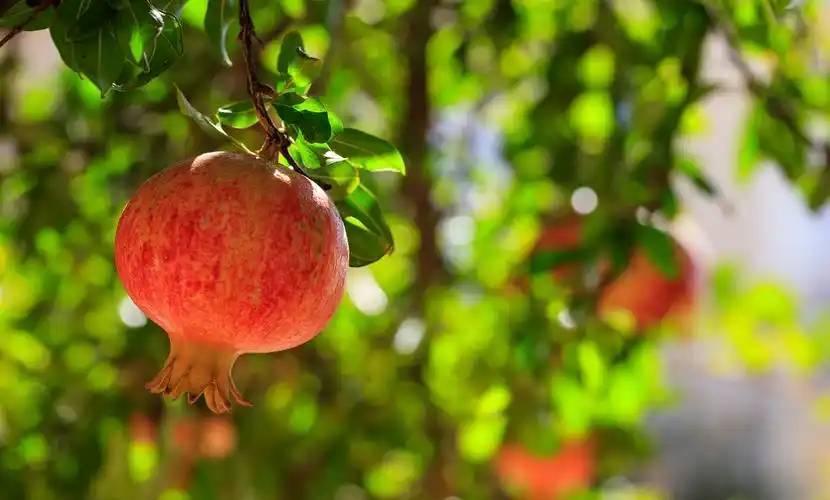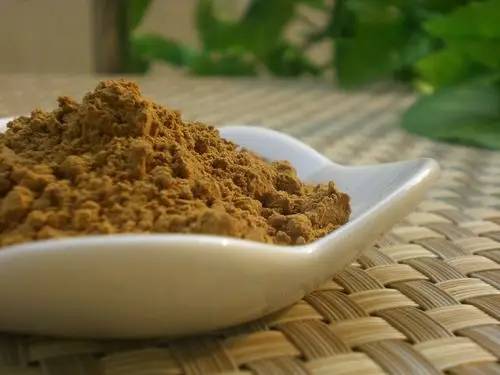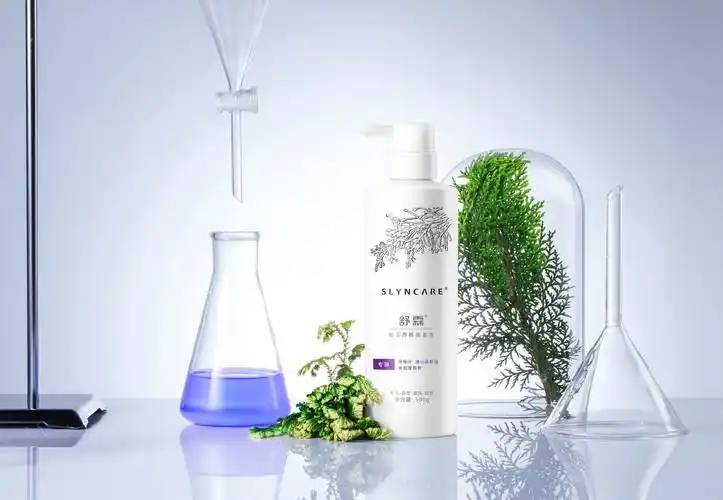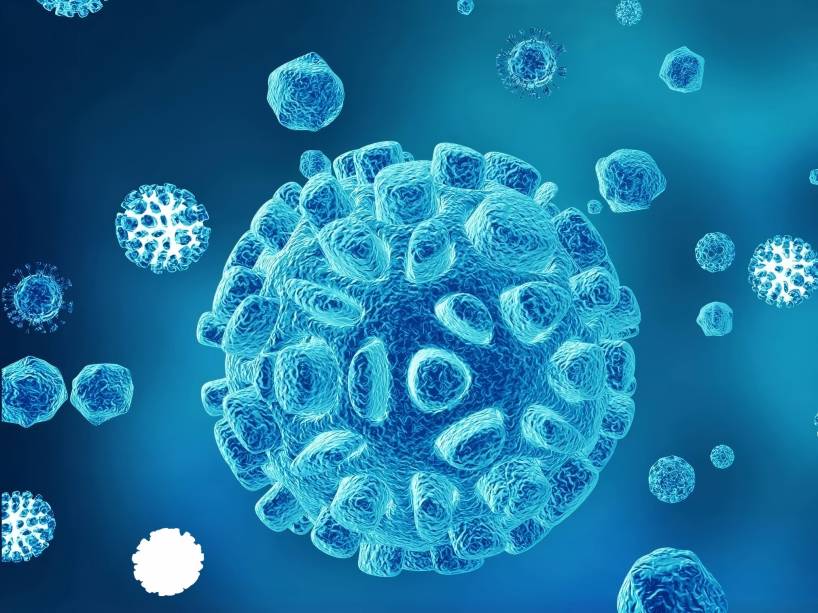How to Examine Pomegranate Extract Polyphenol?
Punica granatum L. is a plant in the family Punicaceae. It is a dual-purpose plant that is used for both medicine and food. It is native to countries in Asia Minor such as Iran and Afghanistan, and has a cultivation history of nearly 2,000 years in China. The Compendium of Materia Medica records the efficacy of pomegranate in “stopping diarrhea, bloody diarrhea, prolapse, and vaginal discharge in menopause.” Its roots, leaves, flowers, fruits, peels, and seeds can all be used in medicine.
Pomegranate extract contains polyphenols with physiological activities such as antioxidant, anti-aging, anti-cancer, antibacterial, skin-moisturizing and beauty-enhancing, blood pressure lowering and prevention of cardiovascular and cerebrovascular diseases [1-2]. Its main ingredients include ellagic acid, punicalagin, gallic acid, etc. Pomegranate is a traditional medicinal herb with similar properties to food, and its medicinal and edible value is being increasingly valued. However, as a medicinal plant, it is particularly important to select the appropriate pharmacological ingredients. Selecting the best process to extract specific target components has always been the focus of pharmaceutical research. With the development of science and technology, analytical instruments are constantly being improved, so that more information about compounds and an increase in the types of compounds that can be analysed can be obtained based on the selectivity and sensitivity of the tests. A review of the extraction processes and testing methods for pomegranate polyphenols in recent years is provided below.
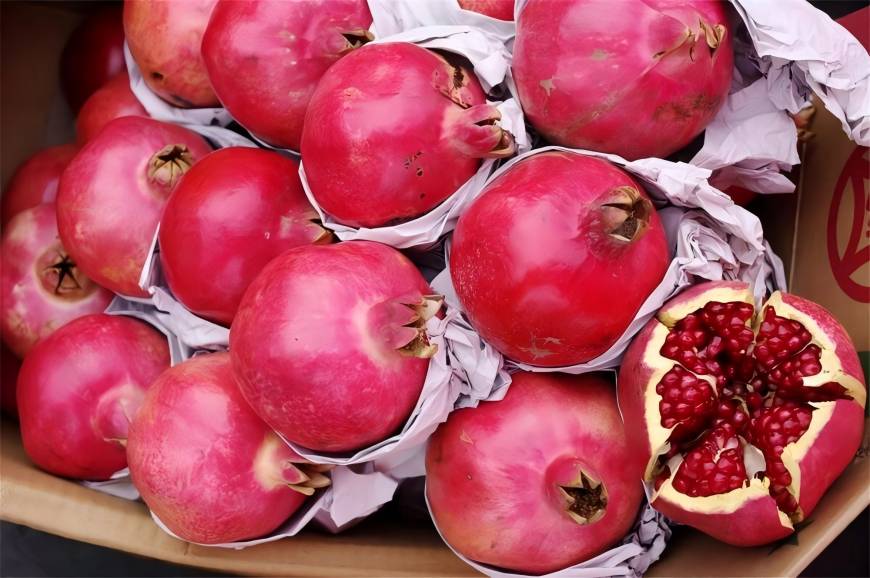
1 Extraction method research
1.1 Solvent extraction method
The solvent extraction method for pomegranate polyphenols is simple, stable and reliable, and is suitable for the extraction of most Chinese medicinal materials. However, organic solvents are costly and polluting, and their consumption is high. This method commonly uses methanol, ethanol, acetone and ethyl acetate as solvents. These organic solvents have good solubility for polyphenols, do not undergo chemical reactions and are easy to separate. Jia et al. [3] used 20% ethanol as the solvent, a liquid-to-material ratio of 1:20, and an extraction temperature of 50 °C for 1 h, achieving a polyphenol yield of 22.86%. Sun et al. [4] used 50% ethanol as the solvent, a liquid-to-material ratio of 25:1, and an extraction temperature of 70 °C for 1.5 h, achieving a polyphenol yield of 16.28%. Wang et al. [5] screened the extraction solvents for total polyphenols from pomegranate peel in Xinjiang, and the results showed that the yield of polyphenols was methanol > ethanol > water > ethyl acetate.
1.2 Ultrasonic-assisted extraction method
Ultrasonic-assisted extraction does not require heating, has a high extraction rate, a short extraction time, is simple and easy to operate, and is suitable for the extraction of most Chinese medicinal ingredients. However, it is difficult to ensure the safety of ultrasonic devices. Zhao et al. [6] used response surface methodology to optimize the process conditions for ultrasonic extraction of polyphenols from pomegranate peel and compared it with shaking extraction. The extraction time was 35 min (1/7 of the shaking extraction time), the ethanol volume fraction was 59%, the ultrasonic power was 90 W, The extraction yield was up to 321.26 mg/g. Wang et al. [7] optimized the extraction process of pomegranate peel polyphenols using ultrasonic-assisted extraction using a two-factor universal rotary regression combined design: ethanol concentration 50%, material-to-liquid ratio 1:25, ultrasonic time 30 min, ultrasonic power 360 W, and the yield of pomegranate peel polyphenols was up to (21.22± 0.06)%.
1.3 Microwave-assisted extraction
Microwave-assisted extraction is energy-saving, causes less pollution, has a high thermal efficiency, and does not require pretreatment such as drying, simplifying the process and reducing investment. It is known as a “green extraction process” and is used to extract alizarin from plants and to carry out process monitoring and quality control of polymers and their additives. However, the equipment is expensive and inconvenient to maintain. Song et al. [8] obtained a crude extract with a polyphenol content of 19.548 g/100 g under the optimal extraction conditions (40% ethanol, extraction power 242 W, extraction time 60 s, and material-to-liquid ratio 1:5). Liu et al. [9] used microwave extraction to extract polyphenols from pomegranate peel. and an orthogonal test was used to determine the optimal extraction process as a 30% ethanol solution, a material-to-liquid ratio of 1:20, an extraction power of 300 W, an extraction temperature of 60 °C, an extraction time of 100 s, and a polyphenol yield of up to 26.91%.
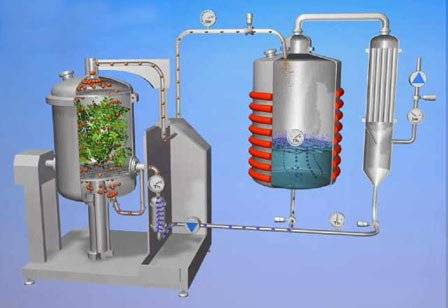
1.4 Supercritical fluid extraction
Supercritical fluid extraction is a method of extraction and separation using supercritical fluids as solvents. This method operates at near room temperature and is particularly suitable for the extraction and separation of heat-sensitive natural products and the separation of volatile substances. It is also suitable for the separation and extraction of solid substances. Its common solvent is CO2, which has excellent properties such as low viscosity, high diffusivity, high density and strong solubility. Feng et al. [10] compared supercritical CO2 extraction, ultrasonic extraction, microwave extraction and maceration extraction to extract gallic acid from pomegranate peel, with contents of 0.396%, 0.311%, 0.271% and 0.498% respectively. It can be seen that supercritical CO2 extraction has a relatively high extraction efficiency.
1.5 Enzyme method
The enzyme method has the advantages of mild extraction conditions, high selectivity, high extraction rate, energy conservation and environmental protection, simple and feasible process, but it has relatively strict requirements for the extraction conditions, and the determination of the type of enzyme and the determination of the optimum pH, temperature and concentration are relatively strict. Wang et al. [11] used the enzyme method to study the polyphenols in pomegranate peel. A single factor study was carried out to investigate the effects of different concentrations of cellulase, pectinase, complex enzyme, enzymatic hydrolysis time, enzymatic hydrolysis temperature and pH of the enzymatic hydrolysate on the yield of polyphenols. A two-level generalised rotary regression combined design was used to optimise the process parameters. The results showed that the factors affecting the yield of polyphenols were enzymatic hydrolysis time > enzyme concentration > pH > enzymatic hydrolysis temperature, It was determined that the polyphenol yield reached (23.87±0.08)% when the quality concentration of the complex enzyme was 0.25 mg/mL, the enzymatic hydrolysis time was 150 min, the temperature was 50 °C, and the pH of the enzymatic hydrolysate was 6.0. The extraction rate was 16.84% higher than that of the solvent method.
2 Research on detection methods
2.1 Furfuraldehyde method
The principle of the Folin phenol method for determining polyphenols is that the reduction of phenolic hydroxyl groups, the number of phenolic hydroxyl groups and the amount of colored chemical substances formed with the oxidizing reagent are linearly related within a certain range. This method has the advantages of low reagent consumption, convenient operation, high sensitivity and good stability, but the reagent preparation is more troublesome.
Nan et al. [12] used gallic acid as a standard to determine the polyphenol content of guava leaves. When the Folin reagent was diluted 10 times, 40% Na2CO3, the reaction time was 7 min, and the reaction temperature was 50 °C, there was a good linear relationship between the polyphenol content and the absorbance within 0–500 mg. Du et al. [13] used this method to determine the polyphenol content in pomegranate peel. The reagent concentration was 0.6 mol/L, 0.150 g/mL Na2CO3, and the reaction was carried out in the dark at 25 °C for 50 min. The detection wavelength was 765 nm. There was a good linear relationship between the concentration of gallic acid and the absorbance value in the range of 1–6 mg/L. Zhu et al. [14] used gallic acid as a standard to determine the polyphenol content of pomegranate peel. 1.00 mL of Fering reagent, 3.00 mL of 10.0 g/100 mL Na2C03, reaction temperature 25 °C, reaction time 120 min, measuring wavelength 672 nm, in the range of 10-100 μg/mL, the concentration of gallic acid has a good linear relationship with absorbance.
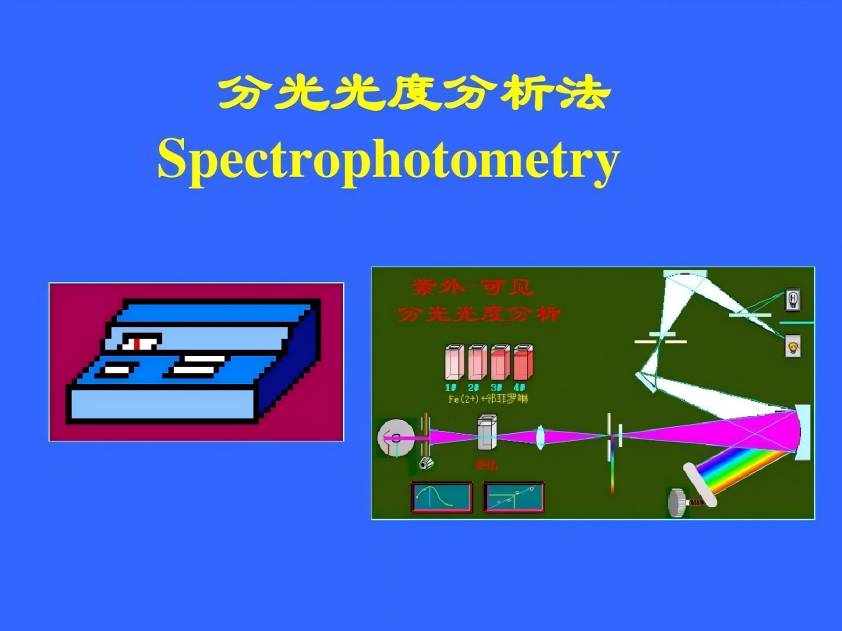
2.2 Spectrophotometry
Spectrophotometry is highly specific, simple and fast, with good reproducibility, but not very accurate. It is suitable for the qualitative and quantitative analysis of most active ingredients in Chinese herbal medicines. Wang et al. [15] used ultraviolet spectrophotometry to determine the total tannin content in pomegranate peel. Gallic acid was used as the control substance, and the detection wavelength was 760 nm. There was a good linear relationship with the absorbance in the range of 0.0502 to 0.2526 μg/mL (r = 0.9996). Yang et al. [16] used ultraviolet spectrophotometry to determine the content of gallic acid, the main component in pomegranate and pomegranate peel.
The result showed that the content of gallic acid in pomegranate peel was slightly higher than that in pomegranate. Wang [17] used spectrophotometry to determine the hydrolyzed polyphenol content in pomegranate seed extract, and found that there was a good linear relationship between the concentration of pyrogallic acid and the absorbance in the range of 0.014 to 0.07 mg/mL (r = 0.999 2). The hydrolyzed polyphenol content in pomegranate seed extract was 7.55%. Zhang et al. [18] used the casein method to determine the tannin content in pomegranate peel. The results showed that the tannin content had a good linear relationship in the range of 1.02–6.12 g/mL (r = 0.9993), the recovery rate of the sample was 97.4%, and the RSD was 1.21% (n = 6). Zhou et al. [19] compared the polyphenol yields of pomegranate peel using different extraction methods by measuring the polyphenol content by the ferric tartrate colorimetric method. The results showed that the microwave-assisted extraction of pomegranate peel polyphenols in an ethanol-ammonium sulfate aqueous two-phase system had a higher yield.
2.3 High-performance capillary electrophoresis
This method has the characteristics of high column efficiency, fast separation speed, high selectivity, and a simple instrument. However, the separation reproducibility is affected because of the small injection volume, poor preparation ability, low sensitivity, and the fact that the electrophoresis can vary depending on the sample composition. Zhou et al. [20] used an uncoated capillary column, a buffer solution of 30 mmol/L ammonium butanolate-30 mmol/L dipotassium phosphate (20:9), a separation voltage of 20 kV, a detection wavelength of 254 nm, a column temperature of 25 °C, and injection conditions of 25 mbar and 5.0 s. The content of ellagic acid in the pomegranate peel extract was determined. The detection concentration of ellagic acid was in the range of 0.039 8 to 0.318 4 mg/mL, and the concentration had a good linear relationship with the peak area (r = 0.999 3). This method is accurate and reliable and is suitable for quality control of pomegranate medicinal materials.
2.4 High-performance liquid chromatography
High-performance liquid chromatography (HPLC) is sensitive, fast and accurate. In principle, it can be used to separate and analyze organic compounds with high boiling points, poor thermal stability and a relative molecular mass of ≥400. However, the sample needs to be pretreated before injection. Liu et al. [21-22] used reversed-phase high-performance liquid chromatography (RP-HPLC) to simultaneously determine the contents of gallic acid, ellagic acid, punicalagin and ellagic acid in pomegranate peel and juice. The injection amounts of gallic acid, ellagic acid, punicalin and ellagic acid were in the range of 0.020–0.320 μg, 0.038–0.608 μg, 0.074~1.184 μg, 0.039~0.624 μg, and the concentrations show a good linear relationship with the respective peak areas (r is 0.999 7, 0.997 1, 0.997 8, and 0.999 4, respectively). It can be used as a detection method for the four polyphenol components in pomegranate juice and pomegranate peel. Ding et al. [23] determined the content of ellagic acid in pomegranate peel extract by HPLC.
Under the optimal detection conditions, ellagic acid had a good linear relationship with the peak area in the range of 5.36–171.40 μg/mL, so it can be used to determine the content of ellagic acid in pomegranate peel extract. Lei et al. [24] used HPLC to determine the content of ellagic acid in the plasma of rats after oral administration of pomegranate leaf extract. The results showed that ellagic acid in rats was distributed according to a two-compartment model, with a low oral blood concentration, most of it being absorbed through the stomach, a short time to peak, rapid absorption, rapid distribution and elimination. The absorption of ellagic acid from pomegranate leaves was greater than that of ellagic acid itself.
Luo et al. [25] used RP-HPLC to simultaneously determine the content of punicalin and ellagic acid in a vaginal effervescent tablet extract of pomegranate peel. Punicalin had a good linear relationship in the range of 0.098–0.610 mg/mL (r = 0.999 1), ellagic acid in 0.011~ 0.060 mg/mL (r = 0.999 8) has a good linear relationship. This method is accurate, simple, and has strong specificity. It establishes a method for the quality control of vaginal effervescent tablets extracted from pomegranate peel. Li et al. [26] used RP-HPLC to determine the tannin component punicalagin in pomegranate peel, and the amount of punicalagin was found to be high (10%), which is consistent with the standard of not less than 10% tannin mass fraction stipulated in the 2005 edition of the People's Republic of China Pharmacopoeia. Parida Abliz et al. [27] used HPLC to determine the gallic acid content in Xinjiang pomegranate peel, which showed good linearity in the range of 9-90 mL, indicating that the method is accurate and reliable.
2.5 Liquid chromatography-mass spectrometry
Liquid chromatography-mass spectrometry (LC-MS) combines the powerful separation and analysis capabilities of liquid chromatography (LC) with the sensitive identification and structural analysis capabilities of mass spectrometry (MS), providing reliable and accurate relative molecular mass and structural information. Xu et al. [28] used LC-MS to identify the main polyphenols in natural pomegranate juice. Preliminary analysis results showed that pomegranate juice contains ellagic acid, punicalin, apigenin, apigenin-7-O-β-D-glucopyranoside, rutin, 3,3',4',5,7-pentahydroxyflavanone, and 3,3',4',5,7-pentahydroxyflavanone-6-D-glucopyranoside. Begoia Cerdä et al. [29] established an HPLC-MS-MS analysis technique to to detect the bioavailability and metabolites of the main pomegranate polyphenol component, punicalagin, in rats. It was the first report of the absorption of ellagitannins in plasma.
2.6 Other
Tang et al. [30] used the complexometric method to determine the content of tannins in pomegranate peel and found that the content of various polyphenol substances in different pomegranate peel varieties was significantly different. Wang et al. [31] used the Prussian blue method to determine the content of polyphenols in 8 kinds of fruits such as pomegranate. The results showed that the content of polyphenols and tannins in the extract was positively correlated with its antioxidant properties. Zeng et al. [32] used the phosphomolybdic acid-casein method to determine the total tannin content in pomegranate peel. This method has the characteristics of strong specificity, simple and easy operation, stable results and good reproducibility. Ji et al. [33] used capillary electrophoresis to simultaneously detect the two components of ellagic acid and punicalin in pomegranate peel extract. Compared with HPLC, the t-test showed that the difference between the two groups of data was not statistically significant, and the correlation coefficients of the two methods were both >0.998, indicating good accuracy.
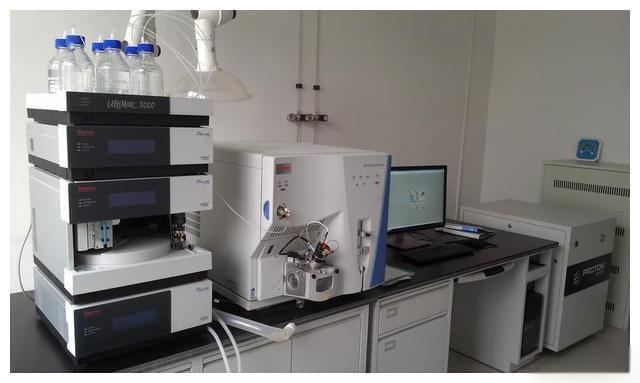
3 Summary
Currently, there are several methods for extracting pomegranate polyphenols, including solvent extraction, ultrasound-assisted extraction, microwave-assisted extraction, supercritical fluid extraction, and enzymatic methods. Among them, the solvent extraction method is a traditional method for extracting pomegranate polyphenols, which is the most widely used. The process is relatively simple, stable and reliable, but organic solvents are consumed heavily, which is costly and polluting. Ultrasonic-assisted extraction is more time- and energy-saving than the solvent method, with a high extraction rate and fast extraction speed, and is widely applicable. Supercritical fluid extraction has excellent transport properties, strong permeability, a high extraction rate, and mild operating conditions. especially suitable for separating heat-sensitive substances, but a large one-time capital investment, low product yield, and only applicable to the extraction of a few ingredients; microwave-assisted extraction saves energy, labor, and time, is environmentally friendly, and is a sustainable technology; enzymatic reactions are highly specific, mild conditions, high extraction rates, green and energy-saving, and have great development potential. Of course, further research is needed to find the best method for extracting, separating and purifying pomegranate polyphenols.
At present, the main methods for determining the polyphenol content of pomegranates include the Folin phenol method, spectrophotometry, high-performance capillary electrophoresis, HPLC, RP-HPLC, and LC-MS. The Folin phenol method is highly sensitive, but less specific; the spectrophotometry method is highly specific, fast and stable, and has good reproducibility, but is less sensitive; the high-performance capillary electrophoresis method has high column efficiency, fast separation, a small injection volume, low reagent consumption; HPLC has the characteristics of high pressure, high efficiency, high speed, high sensitivity, and a wide range of applications. However, due to the limitations of column efficiency, it is commonly used to simultaneously quantify one or two components and is not suitable for simultaneously determining multiple components; LC-MS technology has become one of the most important separation and identification methods today due to its powerful analysis and identification capabilities. It plays an even more important role in the field of analytical chemistry, but its equipment is expensive and requires highly trained operators, so it is not yet widely available.
Reference:
[1] Sumner MD, Elliott-Euer M, Weidne C, et al. Effects of pomegranate juice consumption on myocardial peffusion in patients with coronary heart disease[J]. Am J Cardiol,2005,96:810-814.
[2] Seeram NP, Adams LS, Henning SM, et al. In vitro antiproliferative, apoptotic and antioxidant activities of punicalagin, ellagic acid and a total pomegranate tannin extract are enhanced in combination with other polyphenols found in pomegranate juice[J]. J Nutr Biochem,2005,16(6):360-367.
[3] Jia Dongying, Yao Kai, Tan Wei, et al. Optimization of polyphenol extraction conditions from pomegranate peel [J]. Forest Chemical Industry, 2006, 26(3): 123-126.
[4] Sun Lanping, Zhang Bin, Zhao Daqing, et al. Optimization of alcohol extraction process of polyphenols from pomegranate peel [J]. Packaging and Food Machinery, 2007, 25(4): 20-23.
[5] Wang Xiaoyu, Gao Xiaoli, Maerden Mahmuti. Experimental study on the extraction of polyphenols from pomegranate peel in Xinjiang [J]. Chinese Ethnic and Folk Medicine, 2008, 18(1): 8-10.
[6] Zhao Yanhong, Li Jianke. Establishment of a mathematical model for the extraction of polyphenols from pomegranate peel with the aid of ultrasound using response surface methodology [J]. Processing of Agricultural Products, 2009 (3): 126-131.
[7] Wang Huabin, Bao Xiaowei, Han Haixia, et al. Study on the extraction process of polyphenols from pomegranate peel in Xinjiang [J]. Food and Machinery, 2010, 26 (5): 137-140.
[8] Song Weiwei, Jiao Shirong, Zhou Jia, et al. Microwave-assisted extraction of polyphenols from pomegranate peel and study of the antioxidant and antibacterial effects of the extract [J]. Modern Food Science and Technology, 2008, 24(1): 23-27.
[9] Liu Hong, Ao Bo, Fan Shuhui, et al. Experimental study on microwave extraction of polyphenols from pomegranate peel in Huili, Sichuan [J]. Food and Fermentation Industry, 2008, 36(26): 11172-11173.
[10] Feng W Q, Li H. Comparison of four methods for extracting gallic acid from pomegranate peel [J]. Chinese Medicine Herald, 2008, 14(8): 16-17.
[11] Wang H B, Wang S, Fu L. Study on the extraction of polyphenols from pomegranate peel by enzymatic method [J]. Chinese Journal of Food Science, 2012, 12(6): 56-65.
[12] Nan Ji, Li Yuanzhi, He Luoqiang, et al. Optimization of the determination conditions of polyphenol content in guava leaves [J]. Processing of Agricultural Products, 2009(3): 181-192.
[13] Du Dandan, Li Jianke. Optimization of conditions for the determination of polyphenol content in pomegranate peel by Folin-Ciocalteu colorimetry [J]. Journal of Northwest A&F University: Natural Science Edition, 2011, 39(5): 190-196.
[14] Zhu Caiping, Xia Deshui. Determination of polyphenols in pomegranate peel extract by Folin-Ciocalteu colorimetry [J]. Spectrum Laboratory, 2012, 29(3): 1356-1360.
[15] Wang Keying, Zuo Hongdi, Yang Liming. Determination of total tannin content in pomegranate peel by ultraviolet spectrophotometry [J]. Journal of Guiyang College of Traditional Chinese Medicine, 2007, 29(6): 66-67.
[16] Yang Qiaohu, Jia Haiying, Yu Haitao, et al. Comparison of the determination of gallic acid content in pomegranate and pomegranate peel [J]. Chinese Journal of Ethnic Medicine, 2003, 9(1): 34-35.
[17] Wang Hongwei. Determination of hydrolyzed polyphenol content in pomegranate seed extract [J]. Journal of Shangqiu Normal University, 2009, 25(6): 80-82.
[18] Zhang Xiaoying, Parida Abliz, Zhu Yan, et al. Determination of tannin content in pomegranate peel from different origins in Xinjiang by casein method [J]. Food Science, 2009, 30(8): 260-262.
[19] Zhou Ancun, Tang Jinliang, Feng Wuqun, et al. Study on the yield of polyphenols extracted from pomegranate peel by different methods [J]. Chinese Medicine Herald, 2011, 17(12): 68-69.
[20] Zhou Benhong, Wu Zhenhua, Li Xiaojun, et al. Determination of ellagic acid in pomegranate peel by high performance capillary electrophoresis [J]. Chinese Pharmacy, 2005, 16(24): 1893-1894.
[21] Liu Zhenping, Chen Xiangui, Peng Haiyan, et al. Simultaneous determination of four polyphenol components in pomegranate peel by RP-HPLC [J]. Chinese Pharmacy, 2013, 24(3): 238-240.
[22] Liu Zhenping, Chen Xiangui, Peng Haiyan, et al. Determination of four polyphenol components in pomegranate juice by RP-HPLC [J]. Chinese Journal of Food Science, 2013, 13(1): 183-187.
[23] Ding Nan, Gao Xiaoli. Determination of ellagic acid in pomegranate peel extract by HPLC [J]. Journal of Xinjiang Medical University, 2012, 35(6): 770-772.
[24] Lei F, Xing D, Xiang L, et al. Pharmacokinetic study of ellagic acid in pomegranate leaf extract in rats [J]. Drug Evaluation, 2005, 2(1): 38-41.
[25] Luo Yuqin, Li Yang, Re Yimuguli Abdulla, et al. Simultaneous determination of punicalin and ellagic acid in vaginal effervescent tablets containing pomegranate peel extract by RP-HPLC [J]. Chinese Herbal Medicine, 2011, 42(10): 2011-2013.
[26] Li Haixia, Zhang Hongling, Liu Yanze, et al. Determination of punicalin in pomegranate peel by RP-HPLC [J]. Chinese Herbal Medicine, 2006, 37(5): 780-781.
[27] Parida Abliz, Zhang Lijing, Reena Kasim, et al. Determination of gallic acid in pomegranate peel from Xinjiang by high performance liquid chromatography [J]. Shizhen National Medicine, 2007, 18(10): 2455-2456.
[28] Xu Jing, Wei Jingyu, Guo Jifen, et al. Separation and identification of some polyphenols in pomegranate juice [J]. Chinese Journal of Food Science, 2010, 10(1): 190-199.
[29] Begoia Cerdä, Rafael Lorach, Josë J Ceüon. Evaluation of the bioavailability of the bioavailability and metabolism in the rat of punicalagin, an antioxidant polyphenol from pomegranate juice[J]. Original Contribution,2003,42(1):19-28.
[30] Tang Lili, Liu Linwei, Sun Lifang, et al. Extraction and composition analysis of polyphenols in pomegranate peel [J]. Food Research and Development, 2010, 31(5): 121-125.
[31] Wang Zhiyuan, Li Qingbiao, Yang Cuixian, et al. Polyphenol content and antioxidant properties of eight fruits [J]. Natural Product Research and Development, 2007, 19(6): 1040-1043.
[32] Zeng Ying, Wu Feng, Zhou Benhong. Determination of total tannin content in pomegranate peel by phosphomolybdic acid-casein method [J]. Chinese Pharmacist, 2010, 12(13): 1775-1776.
[33] Ji Baihui, Yang Xiaoxiao, Ni Xinjiong, et al. Determination of ellagic acid and punicalin in pomegranate peel by capillary electrophoresis [J]. Journal of Analytical Testing, 2013, 32(3): 367-371.


 English
English French
French Spanish
Spanish Russian
Russian Korean
Korean Japanese
Japanese